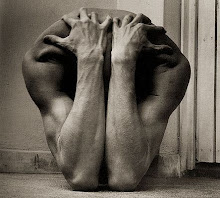Tuesday, December 27, 2005
Thursday, December 22, 2005
The Green Menace
The Mystery of the Green Menace
At first,  Ted Breaux dismissed the urgent warnings on TV and radio. He even ignored the sirens that started blaring Saturday afternoon. "The last two times they evacuated the city, I stayed," says Breaux, 39, a chemist and environmental microbiologist. But when he woke up on Sunday, August 28, the hurricane had become a Category 5 and was still bearing down on New Orleans. He decided it was time to get out of his house on the floodplain just south of Lake Pontchartrain. He packed his Mitsubishi Lancer Evolution with all the essentials: clothes, toiletries, a laptop, some World War II rifles, ammo, and $15,000 worth of absinthe.
Ted Breaux dismissed the urgent warnings on TV and radio. He even ignored the sirens that started blaring Saturday afternoon. "The last two times they evacuated the city, I stayed," says Breaux, 39, a chemist and environmental microbiologist. But when he woke up on Sunday, August 28, the hurricane had become a Category 5 and was still bearing down on New Orleans. He decided it was time to get out of his house on the floodplain just south of Lake Pontchartrain. He packed his Mitsubishi Lancer Evolution with all the essentials: clothes, toiletries, a laptop, some World War II rifles, ammo, and $15,000 worth of absinthe.
It took Breaux six hours to go 20 miles, and a full day to reach refuge in Huntsville, Alabama. He spent the next week watching Fox News, looking at aerial photos of New Orleans on his laptop, wondering if his friends had made it out, and cursing himself for not remembering to grab his original 1908 copy of Aux Pays d'Absinthe.
Raised in New Orleans, a city once dubbed the Absinthe Capital of the World, Breaux has long been fascinated with the drink. Absinthe is a 140-proof green liqueur made from herbs like fennel, anise, and the exceptionally bitter leaves of Artemisia absinthium. That last ingredient, also known as wormwood, gives the drink its name - and its sinister reputation. For a century, absinthe has been demonized and outlawed, based on the belief that it leads to absinthism - far worse than mere alcoholism. Drinking it supposedly causes epilepsy and "criminal dementia."
see also *
Saturday, December 17, 2005
History

Nowhere was this cafe culture more vibrant than in the Parisian district of Montmartre, already by the mid 19th century the favourite haunt
of the bohemian literary and artistic set. Amongst the best known establishments were the Brasserie des Martyrs, a particular favourite of
Baudelaire, the Cafe du Rat Mort, popular with writers by day and a lesbian hangout at night, and most famous of all, the Chat Noir,
founded in 1881 by Theodore Salis, an unsuccessful painter. Erik Satie played the piano here and Alfred Jarry was a regular, as was the
remarkable poet and inventor Charles Cross, who reputedly drank 20 absinthes a night.
In 1860, a young Parisian author, Henri Balesta, wrote Absinthe et Absintheurs, the first book to record the social context of heavy absinthe
drinking. He describes a typical cafe scene:
"In the morning, at lunchtime, the habitués invaded the bistrot. The professors of absinthe were already at their station, yes, the teachers
of absinthe, for it is a science, or rather an art to drink absinthe properly, and certainly to drink it in quantity. They put themselves on the trail
of the novice drinkers, teaching them to raise their elbow high and frequently, to water their absinthe artistically, and when, after the tenth
little glass, the pupil rolled under the table, the master went on to another, always drinking, always holding forth, always steady and
unshakeable at his post."
Absinthe hit its peak during the years from 1880-1910, when it fell dramatically in price, becoming accessible to all parts of society and
rivalling wine as the most popular drink in France. By then EVERYONE drank absinthe – society ladies, gentlemen-about-town,
businessmen and politicians, artists, musicians, ordinary working-men. In 1874, France consumed 700,000 litres of absinthe, but by
1910, the figure had exploded to 36,000,000 litres of absinthe per year. It was a quintessential part of Belle Epoque French society.
absinthe
Friday, December 16, 2005
Leah

Leah: Absinthe Drinker
I'm convinced I can learn to love German girls...soon as they learn
to speak French.
Thursday, December 15, 2005
Manet

Edouard Manet. The Absinthe Drinker
1858-1859. Oil on canvas. Ny Carlsberg-Glyptotek, Copenhagen, Denmark.
















